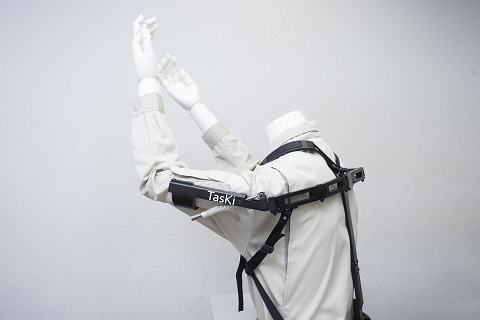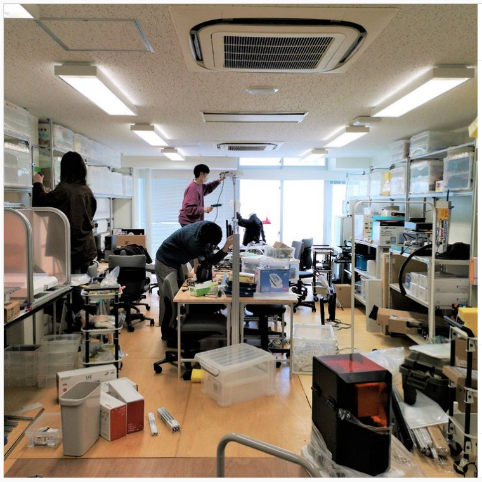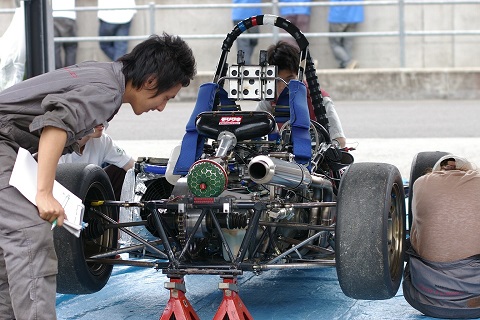reseach
Toward Mechanisms Combining the Best of Design and Engineering
Yasuyuki Yamada, Associate Professor
Department of Engineering and Design, Faculty of Engineering and Design
Posted Oct.5,2021
Faculty Profile
Studying mechanisms in terms of shape, structure, and motion, Yasuyuki Yamada, Associate Professor, has been striving for ways of combining the best of design and engineering and for products that can solve challenging problems.
Mechanisms, old-yet-new sustainable development solutions
I specialize in mechanism and design engineering. I study mechanisms, a long-established field of mechanical engineering, from the aspects of design and engineering, with the viewpoint of users in mind. My goal is to suggest simple solutions that rely less on computers or electronic devices and consume less energy such as electric power.
Mechanism-based solutions have a more simplified structure and higher durability, eventually resulting in higher recyclability and greater energy conservation, than solutions extensively using electronic devices and actuators. I believe that these mechanism-based solutions will serve as an aid to achieve the sustainable development goals (SDGs).
Human-centered manufacturing was formerly known as ergonomics and is now expressed in many ways, such as design engineering, design thinking, and human-centered design. The field appears to be attracting growing interest internationally although the growth in interest is rather gradual in Japan. In these days of social issues becoming increasingly complicated and diversified, demand for mechanism-based approaches can be expected to grow in the future. I should redouble my efforts and I should also support and train the younger generation.
Social implementation: Sending the results of research and development into the world
Professors and researchers should aim at social implementation, that is, turning the results of their studies and research to practical use in the real world, and should also train the younger generation to realize social implementation.
I became aware of the need to pay attention to social implementation when I developed YaCHAIKA, high heels. The fatigue-free high heels attracted considerable attention, won the James Dyson Award, which is an international design award, and appeared in Paris Fashion Week. Despite the high reputation, YaCHAIKA did not come onto the market. The reason why is that I had never sold products before and had left things mainly to other people. Learning a lesson from that experience, I started up a business to realize the results of my research proactively. I decided to learn management skills and the know-how of selling goods on the job.
Many professors of the Faculty of Engineering and Design run a design firm or an architectural firm. Work experience would help them to send their latest research accomplishments at university into the real world and to improve their practical education.
I believe that the need for mechanism-based solutions will increase in many fields. As an example, let me introduce TasKi, an assist tool that supports the upper arms of the wearer. I designed TasKi to reduce loads on the upper arms of workers who need to keep raising their arms at work, such as orchard workers and maintenance personnel. Social implementation of TasKi has already begun.
One of my greatest interests at present is child carrying bikes. Many parents currently use a full-size bicycle with a child bike seat mounted on it. The simple structure does not necessarily give the highest priority to the safety and comfort of the child in the bike seat. I should study a new bike mechanism that provides premium safety and comfort for both the parent and the child riding the same bike.
I also aspire to create other mechanical goods that can solve common problems of people, such as self-assembly furniture that can be assembled easily without using any tools.

TasKi incorporates a gravity compensation mechanism that keeps the wearer from feeling the weight of their arms. The arm assist tool has a simple spring-loaded structure and can be used outside for a long period, even in rain.
Passing the benefits of the good education I received from my teachers down to my students and assisting the students in developing their full potential abilities
Problems in modern society are growing in complexity and diversity, and so are the solutions to the problems. Finding and realizing such solutions requires knowledge extending over many fields and the integration of the collected knowledge.
Each time I started studying a new field of mechanical engineering, I had the good fortune to study under top-class professors. In my undergraduate days, I became enthusiastic about Formula Student and learned automobile engineering starting with the fundamentals. In the graduate courses, I studied ergonomics, robotics, and system design deeply. Seeking a career in scholarly research, I also studied soft robotics and bio-inspired design. The skills and knowledge I acquired in those studies have converged into my current research.
Now it is my turn to pass the benefits of my good education down to my students. As an educator, I will instruct students earnestly, let them develop their full potential abilities, and assist them in their first steps into the real world and in acquiring practical wisdom. This is the role of teacher I should bear.
Students of the Department of Engineering and Design, the Faculty of Engineering and Design appear to have a lot of initiative and pursue their goals energetically. I look forward to seeing how they turn out. I hope they acquire the flexibility to adapt to changing conditions while creating new things.

Laboratory with setups that can be freely rearranged for a variety of uses. Any student can easily rearrange all pieces of the furniture in the laboratory by using a single tool.

A scene in Formula Student, which I was enthusiastic about when I was a student. Me inspecting a racing car designed and made by our team before the car ran the race.
Yasuyuki Yamada, Associate Professor
Department of Engineering and Design, Faculty of Engineering and Design
Born in Mie Prefecture in 1986. He has a Bachelor of Science degree in Mechanical Engineering from the Faculty of Science and Technology, Keio University. He has a Master of Science degree in Mechanical Engineering from the School of Integrated Design Engineering and a Ph.D. in Engineering from the School of Science for Open and Environmental Systems, both in the Graduate School of Science and Technology, Keio University. Research Fellowship for Young Scientists of the Japan Society for the Promotion of Science; Nissan Motor Co., Ltd.; Assistant Professor at the Research and Development Initiative, Chuo University; Assistant Professor, Department of Precision Mechanics, Faculty of Science and Engineering, Chuo University; Visiting Prof. at Imperial College London; Assistant Professor at School of System Design and Technology, Tokyo Denki University. Since 2020, Associate Professor at the Faculty of Engineering and Design, Hosei University. With Taro Nakamura, professor at Chuo University, he established SoLARIS Inc. in 2017 and became a director and Chief Technical Officer (CTO) of the company.

